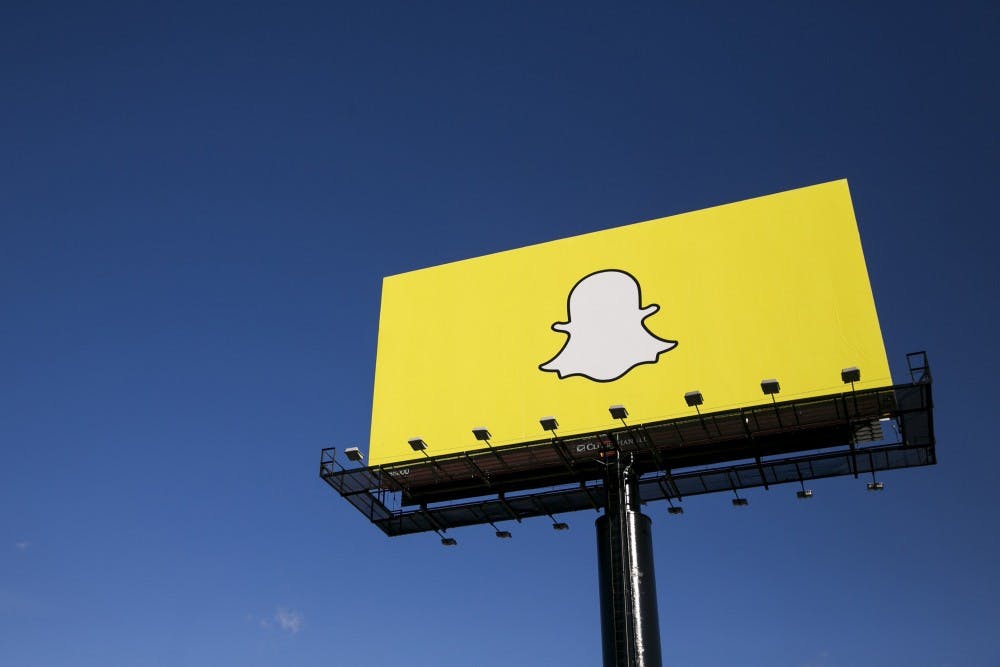If you’re a college student with a phone, chances are you are also a Snapchatter. According to a Bloomberg report from April, Snapchat has more than 100 million users who spend at least 20 minutes using the app everyday.
While Snapchat began as a way to send disappearing photos, it has transformed into both a social and news app heavily utilized by, well, us. Millennials account for 7 out of 10 Snapchat users, according to a poll by Cowen and Company, and while we first downloaded the app to send unfiltered pictures, we kept it for the Stories, Stickers and Chats.
We screenshot and replay and draw — Snapchat has become just as important and permanent on our home screens as Instagram. This app has definitely grown since its birth in 2011 and many users enjoy the Snapchat Discover feature, in which brands such as ESPN, Cosmopolitan, CNN and Buzzfeed release daily content. Snapchat Discover was a significant move in many ways. It showed that apps can be monetized and gave media outlets a new medium. It’s also altering the way we read.
Many people use Snapchat because it’s a less filtered, more genuine version of Instagram. This app has changed the way we take and send pictures. However, if Snapchat changed the way we communicate, it is mutating the way we consume media. As a college student, I get most of my news from the internet. Twitter, Facebook and Google give me all the information I need about what’s going on in the world around me. I’ve somberly watched coverage of tragic events, such as the Orlando shooting last summer, unfold on Twitter, and gawked at presidential debates that Facebook now streams live.
As much as I believe in and am passionate about the business of print, it’s hard to argue that the rise of the iPhone hasn’t permanently altered how I read. Snapchat is another news outlet that makes the consumption of physically printed media, like buying a newspaper, feel like it’s becoming a thing of the past. It’s also eliminating the demand for magazines. Magazines like Vogue and Cosmo have certainly been feeling the affects of the internet. More and more people choose to look at their phones and E-readers than buy actual magazines that are sold in physical stores. But Snapchat is giving these companies, who founded themselves in ink and paper, a way to grow.
This is a bittersweet development. Some of my favorite and most defining memories center on magazines. Laying on the top bunk during rest period at camp, seriously considering the questions of completely trivial quizzes with titles like “What’s YOUR Summer Shoe?” and “Who Is Your PERFECT Crush?” with a cabin full of new friends was a serious bonding experience. I realized that magazines full of HOT TEEN CELEBS and lip gloss ads, while fun, were probably not the height of academia or literature and definitely not something to be taken too seriously.
Flipping through the pages of National Geographic at my grandma’s house gave me a thirst to wander before I’d ever even left the country. Finding a discarded copy of The New Yorker on my first subway ride made me aspire to be able to write like the people who put their stories on those pages, and curling up with my Mom’s latest issue of Garden & Gun, a magazine that focuses on the South, finally made me recognize and respect my roots after years of being almost ashamed of my Southern drawl and inability to drop the word "y’all."
I don’t want magazines to stray too far from their origins of glossy paper. However messy and flawed this industry is, with its Photoshopped models and emphasis on material things, it is also full of experiences and humor and life. They link us together in a way that other forms of print can’t — we share articles and trade magazines and rip pages out to tack on our bulletin boards.
We page through them in waiting rooms, dog-ear pages, then cast them aside for the next person to open and wonder what it was, exactly, that made someone mark that page. But, I also understand that things change. I’d rather read my favorite magazine every morning on Snapchat than not read it at all. If this industry needs a safety net, I’m glad they have one — and as much as I love flipping through the pages of a new magazine, I’m not too proud to admit that I’ll never be able to resist reading my weekly Cosmopolitan horoscope on Snapchat. Magazines may be endangered, but they are not extinct.

